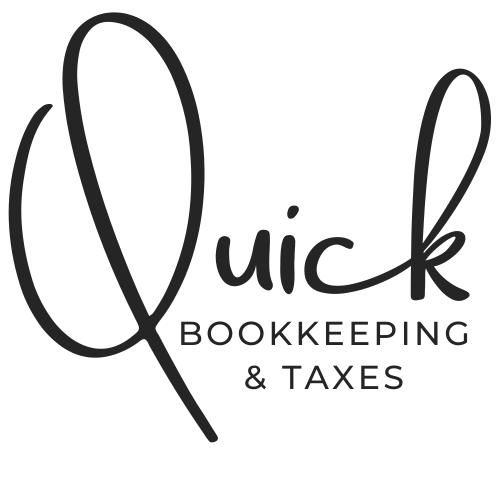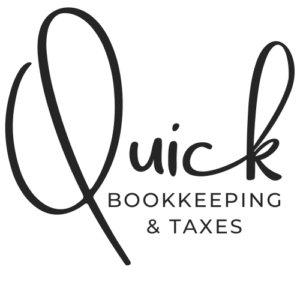Introduction
Keeping your books in order is a key piece to running a healthy, successful business. Without bookkeeping, you’re driving blind like a car without a gas gauge. Sure, the car is driving fine, but who knows how long before you have to pull over and wait for a friend to bring a jerrycan?
To all the entrepreneurs rolling up their sleeves to do their own bookkeeping, we salute you! This guide is for you.
We’ll walk you through the basics of what bookkeeping is, why it matters, and the seven key steps to getting your own bookkeeping process off the ground. We’ll also keep it as simple as possible. Think of it like “bookkeeping for dummies” (not to insult your intelligence). If you want to learn more, we’ve included links throughout to dive deeper.
Bookkeeping is the process of tracking all of your company’s financial transactions, so you can see exactly where your business is spending money, where your revenue is coming from, and which tax deductions you’ll be able to claim.
Why bookkeeping matters
We’ll start with our four favorite reasons.
1. It ensures that you don’t miss out on deductions
You might not know the entire small business tax code in and out, and you don’t have to. But the more information (and supporting documents) your CPA has at tax time, the more deductions you’ll be able to legitimately claim, and the bigger your tax return will be.
2. It can help you secure a business loan
Thinking of expanding your business? If you need financing of any kind, having well-kept books gives lenders or investors a clear idea of your business’s current financial state, and allows them to make financial projections about your company’s ability to pay off your loan in the future.
3. It helps you catch banking errors quickly
If you wait until the end of the year to reconcile your financial transactions, then you won’t know if the bank made a mistake until you’re buried in paperwork at tax time. It can be more difficult to reconcile an overcharge with your bank months later, than if you’d caught it right away.
4. It gives you a clear picture of where your money is going
You may be able to see your bottom line by glancing at your bank balance, but the ups and downs in your account are also telling a story. Are sales up? Are your shipping costs too high? Who knows? Paying attention to your financial statements is a great way to get to know the story of your business.
Where to start
The first seven steps of a bookkeeping process
We’re making it sound easier than it is. When you’re stuck in the minutiae of reconciling your transactions, this won’t feel like “seven easy steps”. But for the sake of explaining the basics of bookkeeping, here are the first seven steps you’ll need to walk through to get your bookkeeping machine humming.
Step 1.
Separate your business and personal expenses
To track your business finances effectively, it’s important to permanently separate them from your personal finances.
Why? Liability—if you’re running a corporation or limited liability corporation and there isn’t sufficient distance between your personal and business finances, there’s a chance that you could be held personally liable for any debts incurred by your business.
Plus, you’ll want to pull your hair out when it’s time to reconcile bank statements, and you have to hunt down the receipt for that $200 brunch to remember if it was a date, or a client meeting.
Step 2.
Choose a bookkeeping system
There are two main bookkeeping methods: single-entry, and double-entry. There’s no right or wrong, it’s just a matter of picking the system that’s right for your business, and sticking with it consistently.
Single-entry is a simple system that might work for you if your bookkeeping is very straightforward. Entries are recorded one time, as either an expense or income. Assets and liabilities are tracked separately. If you’re doing your own bookkeeping and you have a simple business without inventory or equipment, this is likely the approach you’ll want to take.
Double-entry is more complex, but also more robust. First, all transactions are entered into a journal, and then each item is entered into the ledger twice, as both a debit and a credit.
For example, if you own an ice cream shop, each time you sell a pint of ice cream, the sale is entered as a credit to your “cash” account and as a debit to your “ice cream” account (more on accounts later). Debits and credits entered in the ledger should always add up to zero. The IRS has published a handy list of guidelines to help you understand the ins and outs of double-entry.
Using the double-entry method is complicated at first, and may require the help of a trained bookkeeper. But it will give you more accurate books overall. Think of it like double-checking your answers before you hand in a math test.
Step 3.
Choose an accounting method: Cash or Accrual
It’s important to choose either a cash or accrual accounting method before you start your books.
If you’re using cash accounting, you only record transactions when money has exchanged hands. So if you billed a customer today, those dollars wouldn’t enter your ledger until the customer paid you.
Using the accrual accounting method, you would record the income when you bill the customer, rather than waiting for them to pay you. So at the end of the tax year, you’ve recorded all income that you earned during that year, even if you haven’t collected it yet.
Same goes for deductions. You deduct them when you’re billed, not when you pay. If your company has inventory, in most cases you’ll be expected to use the accrual method.


